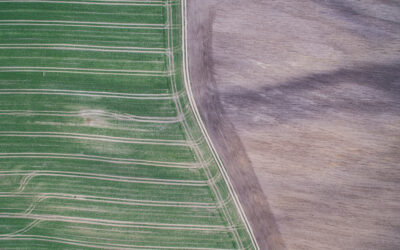A team of researchers from Macquarie University, the University of Queensland and Sugar Research Australia has undertaken a comprehensive review of scientific studies on how climate change impacts sugarcane production. The amount of sugarcane produced worldwide is over four times that produced in 1965 and has now reached over 2 billion tons globally. The industry contributes significantly to gross domestic product (GDP) in major sugarcane producing economies such as Brazil, India, and China, and is thus of major economic importance. The research team reviewed 90 studies from different sugarcane growing regions worldwide and concluded that these studies reach largely different conclusions regarding how increases in air temperature or atmospheric carbon dioxide levels affect sugarcane production. These mixed results can be attributed to differences between the studies in terms of methods, timeframes, and growing regions, which all limit cross-study comparability.
The researchers concluded that the existing research does not allow to draw final conclusions about how climate change will impact the sugarcane industry, thus making it difficult for stakeholders (e.g., farmers, mills, distributors) to act on the results. The challenges associated with using current findings as the basis for policy or production decisions become evident when looking at the impact studies for Brazil as an example. Some studies report significant yield losses in some northeastern Brazilian sugarcane regions, while others describe significant yield gains in southeastern regions due to better growing conditions (due to a combined effects of higher air temperatures and higher atmospheric CO2 concentration which promotes sugarcane growth), and changing management practices. For the purposes of agricultural decision-making, these findings suggest that sugarcane production and expansion should take place mostly in southeastern regions to capitalize on yield gains. However, such recommendations cannot be confidently adopted without verifying the work in additional studies, considering how any industry expansion would affect local communities and ecosystems, and clarifying the extent to which study results diverge due to the use of different methods, scenarios, and models.
In addition, the researchers concluded that there is limited evidence regarding successful adaptation to climate change, that is, responses undertaken to adjust to the observed and/or projected impacts of climate change. Despite a good theoretical knowledge of different adaptation measures (e.g., new irrigation technologies, improved crop varieties, and improved farm management strategies), the existing evidence is not sufficient to provide recommendations regarding what adaptation options to implement, and it is evident that not all adaptation efforts are likely to be equally successful in practice. In particular, the researchers found that there is limited empirical evidence of the uptake, cost, benefits, and effectiveness of different adaptation measures (as well as the risk of maladaptation) in different countries and regions, and for different actors along the sugar value chain, such as farmers, mills, or distributors. It appears that adaptation to climate change will be particularly important for sugarcane production in developing countries (e.g. India, Thailand, China, Pakistan) due to low adaptive capacity, vulnerability to hazards, and poor forecasting and planning systems, but more research and funding is required to put successful adaptation to climate change into practice in these regions.
Kindly contributed by Martina Linnenluecke.
















